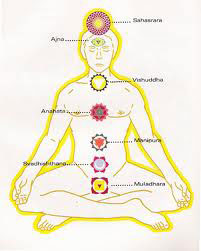
To most of us in the West, the ancient yoga cleansing techniques seem alien and a little scary. But they are an important part of the yoga tradition. Fitness First yoga expert Ashok Naik talks us through the six main forms.
But first, a word of warning: we strongly recommend trying these techniques only under the supervision of an experienced teacher.
The Sanskrit word shatkarma means internal purification. These cleansing processes purify the body so that pranayama (breathing) and meditation may be pursued without discomfort, fatigue or interruption.
Essentialy there are six cleansing processes:
Neti
The ancient nasal cleansing practice of neti has gained scientific credence recently (see our storyhere). The process of neti cleans the nasal passages, the pharynx, and the sinus cavities.
There are two types of neti: Sutra (comprising a fine thread) and Jal (water).
In Sutra neti the practitioner keeps hold of one end of the thread while passing the other up through one nostril at a time and pulling it out through the mouth. A rubber catheter can be used to start with.
In jal neti the practitioner uses a neti pot - he or she uses a small vessel with a spout to pour water into one nostril. The water then pours out of the other nostril or the mouth.
Dhauti
Dhauti means washing or cleansing, and refers to a process that purifies the entire alimentary canal, including the mouth, the food pipe, the stomach, the intestines, and the rectum. There are 11 types of Dhauti that cleanse 7 specific parts of the alimentary canal.
But the most popular and easy to learn are Vastra and Vaman. Vastra Dhautiremoves phlegm, bile, and other impurities from the stomach.
The practitioner swallows a piece of cloth that is about three inches wide and 20 feet in length: dip the cloth in lukewarm water. Insert one end in to the mouth.
Begin to swallow little by little, taking care to do so gradually without chewing the cloth. If it sticks inside the food pipe and will move no further, sip a little water to lubricate the passageway.
Continue swallowing until nearly the entire length of cloth is swallowed. Be sure to leave a small portion of the cloth outside of the mouth. Retain the cloth in the stomach for about 5 minutes.
During this time apply Nauli Kriya, explained at the later stage. Remove the cloth by pulling out very slowly. Phlegm, bile and other impurities will be absorbed by the cloth and there by removed from the body.
Basti
Basti means a natural method of cleansing the large intestine. There are two types, Jal (water) and Sthal (ground) or Shushka (dry) Basti.
In Jal Basti a practitioner sits in a tub filled with waist high water and draws water through rectum and into the colon.
He creates a vacuum in the rectum and lower colon through Uddiyan Bandh(stomach lock) and Nauli. After sufficient water is drawn in he expels the water through anal canal. In medical method enema is used.
Please note that only advance practitioner uses 'Sthal' or 'Shushka' Basti.
Nauli Kriya
In this practice, the rectus abdominal muscles are strongly involved.
In Nauli the abdomen is drawn in, projecting the rectus abdomen muscles forward and expanding and contracting them in such a way as to resemble the waves of the sea.
The technique provides a powerful message to the intestines and digestive organs, and is held to increase the 'bodily fire'.
Nauli is a somewhat difficult yoga exercise to perform. It requires adequate control of the abdominal muscles, especially the rectus abdominals.
Kapalbhati
This is a cleansing technique that many yoga practitioners are familiar with - especially those following the Sivananda style.
In Sanskrit Kapal means 'skull' and Bhati means 'shining'. So Kapalabhati it also known as 'shining skull'.
The technique can be practised in either standing or sitting position. Sit on the floor in Sukhasan (cross legs) or Padmasana (lotus).
Place the hands on the knees. Keep your back straight all the time. Breath in and out rapidly without pausing between inhalation and exhalation.
The exhalations should be forceful , but the inhalations should be automatic and effortless. Contract the abdominal muscles fiercely at each exhalation. Repeat this in quick succession, performing fifteen or twenty sets at a stretch. Rhythm is more important than speed.
Tratak
Tratak means 'gazing steadily at one point without blinking'. Tratak improves mental focus and increases the supply of blood to the eyes as it cleanses and strengthens them. A popular, pleasant tratak technique is to gaze at the naked flame of a candle.
Nadi System
N╪╕┬ج┬ظ¤ش┬ظـزظـû╪╕┘┘ظ¤ش┬i (literally "river", here in the sense "tube, pipe") are the channels through which, in traditional Indian medicine and spiritual science, the energies of the subtle body are said to flow. They connect at special points of intensity called chakras.
The nadi system is mentioned in the Chandogya Upanishad, which says:
"A hundred and one are the arteries of the heart, one of them leads up to the crown of the head. Going upward through that, one becomes immortal.
"Nadis are not nerves but rather channels for the flow of consciousness. The literal meaning of nadi is 'flow'. Just as the negative and positive forces of electricity flow through complex circuits, in the same way, prana shako (vital force) and manas shako (mental force) flow through every part of our body via these nadis. According to the tantras there are 72,108 or more such channels or networks through which the stimuli flow like an electric current from one point to another.
The word "Nadis" can actually be correctly pronounced as "NaRdi", with R+d loosely pronounced together. In normal biological reference, a "Nardi" can be translated into "Nerve" in English. However, in Yogic, and specifically in Kundalini Yoga reference, a "Nardi" can be thought of as a channel (not an anatomical structure). In regard to Kundalini Yoga, there are three of these "Nardis". "Irda", "Pingala", and "Sushumna". "IRda" (again, R+d spoken just like in "NaRdi" - the effort is made by the tip of the tongue, it curls up, pointing backwards, then lashes out springing forward to lay flat)is lies to the left of the spine, whereas "Pingala" is to the right side of the spine, mirroring the "IRda". Sushumna runs along the spinal cord in the center, through the seven chakras, "Mooladhaar" at the base, and "Sahasrar" at the top (or crown)of the head. It is at the base of this "Sushumna" where the "Kundalini" lies coiled in three and a half coils, in a dormant or sleeping state.
Functions and Activities
Nadis are thought to carry a life force energy known as prana in Sanskrit, or qi in Chinese-based systems. In particular prana (active) is supposed to circulate inside Pingala, while apana (passive) is supposed to circulate inside Ida. Inside Sushumna is supposed to circulate kundalini when awakened. The Ida and Pingala nadis are often seen as referring to the two hemispheres of the brain. Pingala is the extroverted (Active), solar nadi, and corresponds to the right hand side of the body and the left hand side of the brain. Ida is the introverted, lunar nadi, and corresponds to the left hand side of the body and the right hand side of the brain (crossing occurs in the optical chiasma). These nadis are also said to have an extrasensory function, playing a part in empathic and instinctive responses. The two nadis are believed to be stimulated through different Pranayama practices, including nadi shodhana, which involves alternate breathing through left and right nostrils, which would alternately stimulate respectively the left and right sides of the brain. The word nadi comes from the Sanskrit root nad meaning "channel", "stream", or "flow". The rhythmical breathing and special breathing techniques are supposed to influence the flow of these nadis or energetic currents. According to this kind of interpretation (which is the Yoga interpretation) the breathing techniques will purify and develop these two energetic currents and will lead to breathing special exercises whose goal is to awake kundalini. Among 7 Nadi Chakras in our body. Of the seven, four are in the trunk of the body, two in the head- and there is one in the neck. Chakra is the power center associated with the subtle body of man. Each chakra is ruled by an incarnation of Goddess Parashakti.
Ida, Pingala and Sushumna
Amongst these ducts or nadis, three are of the utmost importance: the Medullar Sushumna, which interpenetrates the cerebrospinal axis from the perineum to the juncture of the lamboid and sagittal suture of the cranium, and it is associated with both nostrils being open and free to the passage of air. The 'lunar Serpentine Ida' of the left side, of a pale color, negative polarity. It is associated with feminine attributes, the Yin element of Chinese philosophy, and an open left nostril; the solar Serpentine Pingala of the right side, red color, positive polarity. It is associated with masculine attributes, the Yang element of Chinese philosophy, and an open right nostril. Those are the main nadis, but in some tantric texts more than 72,108 nadis are cited. They all start from the central channel of the chakras to the periphery, where they gradually become thinner
The Sat-Cakra-Nirupana, one of the earliest text on nadis and chakra, explicitly refer to these three main nadis, calling them Sasi, Mihira, Susumna.
In the space outside the Meru,the right apart from the body placed on the left and the right, are the two Nadis, Sasi and Mihira. The Nadi Susumna, whose substance is the threefold Gunas, is in the middle. She is the form of Moon, Sun, and Fire even water also; Her body, a string of blooming Dhatura flowers, extends from the middle of the Kanda to the Head, and the Vajra inside Her extends, shining, from the Medhra to the Head.
Sushumna (alternatively known as Susumna) Nadi connects the base chakra to the crown chakra. It is very important in Yoga and Tantra in general. Alternative medicine also refers to Sushumna sometimes. In Raja Yoga or Yoga of Patanjali, when the mind is quietened through Yama, Niyama, Asana and Pranayama the important state of Pratyahara begins. A person entering this state never complains of Dispersion of Mind. This is characterised by observing the movements/jerks in Sushumna, the central canal in the subtle body. The movements indicate the flow of Prana through the central canal and in the process, the sushumna makes the way for the ascent of Kundalini.
Pingala is associated with solar energy. The word pingala means "tawny" in Sanskrit. Pingala has a sunlike nature and male energy. Its temperature is heating and courses from the left testicle to the right nostril. It corresponds to the river Yamuna. The Ida and Pingala nadis are often seen as referring to the two hemispheres of the brain. Pingala is the extroverted, solar nadi, and corresponds to the left hand side of the brain. Ida is the introverted, lunar nadi, and refers to the right hand side of the brain.
Ida is associated with lunar energy sometime it is based on solar energy. The word ida means "comfort" in Sanskrit. Id╪╕┬ج┬ظ¤ش┬ has a moonlike nature and female energy with a cooling effect. It courses from the right testicle to the left nostril and corresponds to the Ganges river. Ida nadi controls all the mental processes while Pingala nadi controls all the vital processes.


